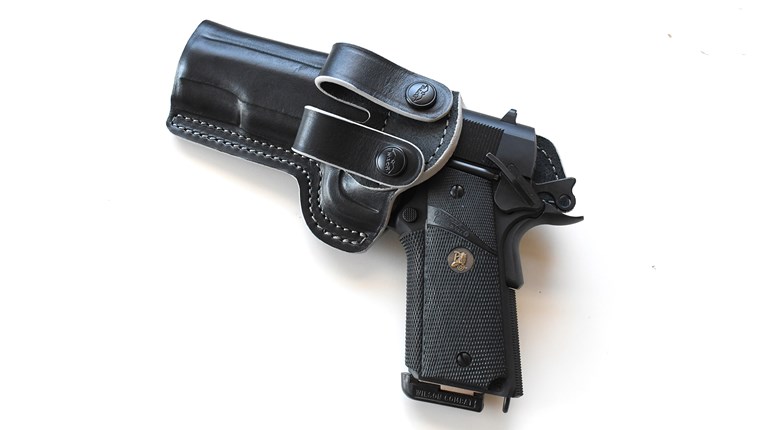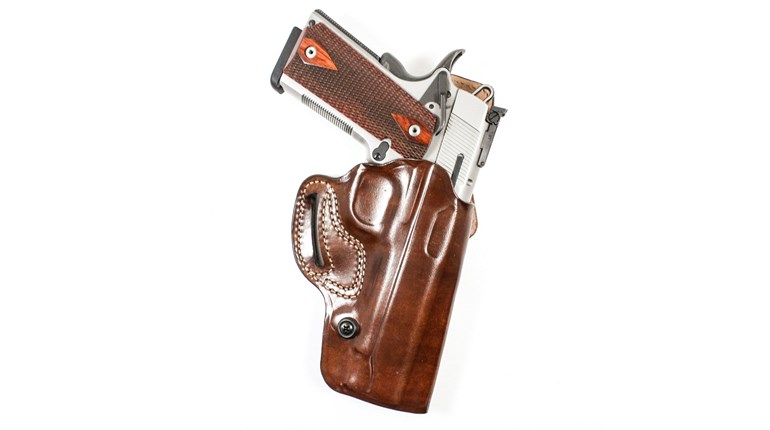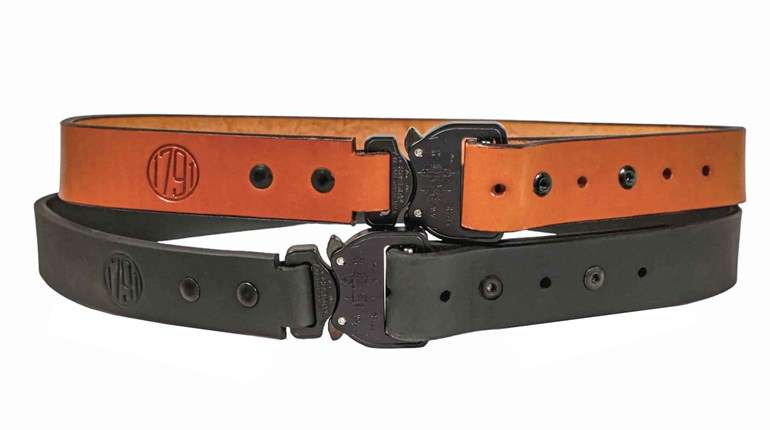
There are custom holsters and then there are custom holsters. We’re all familiar with holsters custom made for a specific gun model. Those have been around for decades in both Kydex and leather. But what if you could customize your own holster? And then customize the same holster again for a different gun?
That’s exactly what 1791 Gunleather has created in the Ultra Custom. Named after the year the 2nd Amendment was ratified, 1791 hasn’t been in the holster business as long as the Bill of Rights, but they know quite a bit about constructing high-quality leather goods. Up until now, every holster they made—and every holster everyone else made—was purpose-built and only fit one style of gun. When they contacted me about this new type of holster, I must admit I was more than a bit skeptical. I’ve seen the molds needed to make really good quality holsters and know the process isn’t cheap or easy. So how could one holster do the work of all the rest? My curiosity was piqued.
When the package arrived, I opened it and found a plain-looking leather holster with no bulges or curves, just a hollow round sleeve. They were right: it was like nothing I had seen before. I perused the instructions and discovered there was a bit of cooking involved. Now, in case I just lost some of you, hang on, it doesn’t require culinary skills. Once I chose a gun—my Walther PK380 because I didn’t have a holster for it—I filled a pot with water, set it to boil and got down to business. The next instruction said to place the holster in the included clear plastic bag and grab some rocks or other waterproof weights. When the first few bubbles appeared in the pot, I turned down the heat, added the holster-in-a-bag and rocks to the water, set the timer for 5 minutes and turned my attention to the two T-shaped tools in the box.
“Wait a minute,” I hear you saying. “How can boiling a leather holster make it malleable enough to mold?” Normally, it can’t. The trick to the Ultra Custom is a layer of Memory-Lok polymer buried between the outside and inside leather. When the polymer gets to 165 degrees, it softens enough to bend it with your hands and shape into the intricate edges of the gun.
The timer dinged and I extracted the warm holster from the bag. Sure enough, it was extremely pliable. Per the instructions, I inserted the gun and, using my hands and the tools, pushed and prodded the leather until it molded perfectly to the Walther’s outline. I left the gun in while the holster cooled to room temperature to ensure it held its shape, which it did. All that was left was a quick clip attachment with a screwdriver and it was ready to go.
For several days after, I carried the Walther in the Ultra Custom IWB and it worked great, never lost its shape and performed as well as a factory-molded leather holster. I will likely keep it molded to the Walther, but it’s great to know that, should I need or want to reshape it for another (similar size) gun in the future, all I need to to is boil up some water.
At $109.99, the Ultra Custom is a bit pricy, but the versatility of its re-moldability (that’s a word now) makes it well worth the price.




































